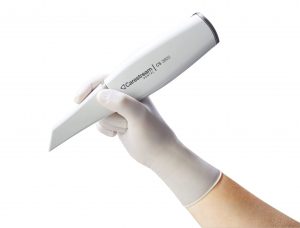Considerations for paediatric dentistry
Featured Products Promotional FeaturesPosted by: Dental Design 27th December 2021

It almost goes without saying that treating children in practice comes with its fair share of challenges. So, what can you do to ensure that you are creating a welcoming space for younger patients and what options can you explore to provide more comfortable, faster treatment for them?
The challenges of treating children
One of the greatest issues we are seeing in dentistry in the UK at this time is the high levels of childhood tooth decay. Already a problem before the pandemic, the emergence of coronavirus only served to exacerbate the situation. In fact, it is now thought that almost 1 in 4 five-year-olds in the UK have dental decay – a shocking figure, especially as you consider how many millions of children call the UK their home.[i]
Alongside these high rates of decay, other hurdles that professionals may come to when they treat children include developmental abnormalities, eruption anomalies and dental trauma.[ii] All of these can present difficulty during treatment unless you have the knowledge, technology and products to help provide an exceptional level of care.
Behavioural challenges and understanding
As well as having certain treatment requirements that are more common, what we must also remember is that children can present certain behavioural challenges too. As children aren’t fully developed, this can lead to them acting up and refusing to be good, especially in environments that may be threatening or unfamiliar.
Furthermore, a high proportion of children, much like adults, are scared of the dentist. Whether this is due to a bad previous visit or a feeling adopted from their parents, figures suggest that as many as 16% of children are afraid of visiting their dentist, and this can lead to more uncooperative behaviour.[iii]
There are a number of ways to overcome these obstacles. One good move is to look into ways that you can make your practice more approachable for younger patients, especially if your patient lists are comprised of many people in the younger age groups.
This could involve decorating your practice to include bright colours and other appealing design features that can help them feel at ease. Research carried out on this point has suggested that 63% of children do prefer child-friendly decorated practices, so it definitely goes a long way towards helping these individuals feel welcome and less stressed.[iv]
Of course, dental treatment is still daunting, so it’s always important to look at using products and technology that can help streamline treatment for children.
 Consider your product selection
Consider your product selection
Not all products you use in practice will necessarily be suitable for younger patients. Indeed, while many products these days are a suitable choice for all age groups, it’s worth exploring those that are particularly beneficial to younger individuals.
Composites or glass ionomers that release fluoride over time, for example, are likely to be a good investment for practices who treat a large volume of child patients, as they provide on-going protection after placement and can help individuals to avoid decay in the future.
You should also assess certain items in terms of comfort. Impression materials, for example, can be quite distressing for patients, so choosing those that have been formulated to set fast and be quick and easy to place is likely to help child patients feel less overwhelmed.
Technology matters too!
Much like your armamentarium, it’s a wise move to consider the technology you use in practice and whether this has any features to help treat child patients. For instance, does your intraoral scanner have additional parts that have been designed to help image acquisition in smaller mouths?
The CS 3800 wireless intraoral scanner from Carestream Dental is a cutting-edge system that makes treating patients of all ages easy. Not only is the scanner incredibly fast and therefore more likely to facilitate comfortable treatment, but it also has a number of different tips available, all of which have been designed for different scenarios such as scanning those with smaller oral cavities.
Care for the future
Providing high quality treatment for children can raise some difficulties, but that doesn’t mean that you can’t ensure that they are receiving an incredible level of care in your practice. By considering their comfort, your product selection and the technology you use, you can ensure that your practice is well equipped to give children the care and advice they need.
Nimisha Nariapara
Nimisha is the Trade Marketing Manager at Carestream Dental covering the UK, Middle East, Nordics, South Africa, Russia and CIS regions. She has worked at Carestream Dental for the past 7 years, where she has developed her marketing skills and industry knowledge to bring the core values and philosophy of the company to the market.
For more information, contact Carestream Dental on 0800 169 9692 or
visit www.carestreamdental.co.uk
For the latest news and updates, follow us on Facebook and Instagram @carestreamdental.uk
[i] Oral Health Foundation. New Statistics on Chilhood Tooth Decay Suggest concerning Lack of Progress. Link: https://www.dentalhealth.org/news/campaigners-look-to-address-childhood-tooth-decay-issue-2020 [Last accessed August 21].
[ii] Slayton, R. et al. Paediatric Dentistry Complications and Challenges. Link:
https://doi.org/10.1002/9781118988053.ch8 [Last accessed August 21].
[iii] AlSarheed, M. Children’s Perceptions of Their Dentists. Eur J Dent. 2011 Apr; 5(2): 186–190.
[iv] lSarheed, M. Children’s Perceptions of Their Dentists. Eur J Dent. 2011 Apr; 5(2): 186–190.








